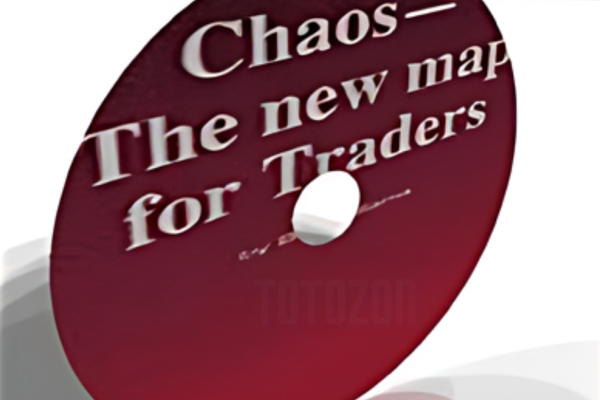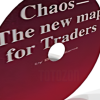Chaos. The New Map for Traders
$15.00
File Size: Coming soon!
Delivery Time: 1–12 hours
Media Type: Online Course
Chaos Theory Trading: Harness Market Patterns for Success
In the dynamic world of trading, chaos theory has emerged as a powerful tool for understanding market complexities. This guide explores how traders can harness chaos to navigate market unpredictability effectively.
Understanding Chaos Theory
Chaos theory delves into the behavior of complex systems where small changes can lead to significant impacts. In trading, this means even minor market fluctuations can drastically alter outcomes.
The Basics of Chaos Theory
Chaos theory asserts that markets are highly sensitive to initial conditions. This sensitivity, known as the butterfly effect, implies that predicting long-term market behavior is nearly impossible.
Historical Context
Chaos theory originated in meteorology, with Edward Lorenz’s discovery in the 1960s. Its principles, however, have profound implications for financial markets.
Why Traders Should Care About Chaos
Understanding chaos helps traders prepare for market volatility. By acknowledging unpredictability, traders can develop flexible strategies.
Implementing Chaos Theory in Trading
Applying chaos theory in trading involves several steps, from recognizing patterns to adjusting strategies based on market behavior.
Identifying Market Patterns
Chaos theory helps in identifying seemingly random patterns in market data. These patterns can offer insights into future movements.
Tools for Pattern Recognition
- Fractals: Repeating patterns that are self-similar across different scales.
- Lyapunov Exponents: Measures the rate of separation of infinitesimally close trajectories.
Developing a Chaos-Based Strategy
Creating a trading strategy based on chaos theory involves understanding fractals, leveraging computational models, and continuously adapting to market changes.
Step-by-Step Guide
- Data Collection: Gather extensive market data for analysis.
- Pattern Analysis: Use tools to identify fractals and other chaotic patterns.
- Model Creation: Develop models to predict potential market movements.
- Strategy Testing: Backtest strategies against historical data.
- Continuous Adjustment: Refine strategies based on real-time market feedback.
Case Studies of Chaos Theory in Trading
Exploring real-world examples can illustrate the practical application of chaos theory in trading.
Case Study 1: Forex Market
Forex traders often utilize chaos theory to predict currency price movements. By identifying fractal patterns, traders can make informed decisions.
Case Study 2: Stock Market
In the stock market, chaos theory helps in understanding price movements during high volatility periods. Traders use it to adjust their portfolios dynamically.
Advantages and Challenges
While chaos theory offers unique insights, it also presents challenges.
Advantages
- Enhanced Predictive Ability: Better understanding of market volatility.
- Informed Decision Making: Data-driven strategies based on pattern recognition.
Challenges
- Complexity: Requires advanced mathematical and computational skills.
- Data Intensity: Needs extensive data for accurate analysis.
Practical Tips for Traders
Adopting chaos theory in trading involves practical steps to integrate its principles into daily trading activities.
Tip 1: Stay Informed
Regularly update your knowledge on chaos theory and its applications in trading.
Tip 2: Use Advanced Tools
Leverage sophisticated software and analytical tools for pattern recognition and model creation.
Tip 3: Backtest Regularly
Consistently backtest your strategies to ensure they remain effective under changing market conditions.
The Future of Chaos Theory in Trading
As technology advances, the application of chaos theory in trading is likely to expand. AI and machine learning can enhance pattern recognition and predictive accuracy.
Emerging Trends
- AI Integration: Combining chaos theory with AI for improved market predictions.
- Big Data Analytics: Utilizing large datasets for more accurate fractal analysis.
Conclusion
Chaos theory provides a new map for traders, offering a deeper understanding of market dynamics and improving trading strategies. By embracing chaos, traders can navigate market uncertainties with greater confidence and adaptability.

Commonly Asked Questions:
- Business Model Innovation: Accept the truth of a legitimate business! Our strategy is organising a group buy in which participants share the costs. We use these cash to acquire popular courses from sale pages and make them available to people with limited financial resources. Despite the authors’ worries, our clients love the cost and accessibility we give.
- The Legal Environment: Yes or No The legality of our activity is ambiguous. While we don’t have specific permission from the course authors to resell the material, there is a technicality at work. The author did not specify any limits on resale when purchasing the course. This legal intricacy is both an opportunity for us and a boon for individuals looking for low-cost access.
- Quality Control: Uncovering the Truth
Getting to the heart of the issue – quality. Purchasing the course straight from the sale page guarantees that all documents and resources are the same as those obtained through traditional channels.
However, we distinguish ourselves by going beyond personal research and resale. It is crucial to note that we are not the official course providers, which means that the following premium services are not included in our package:
- There are no scheduled coaching calls or sessions with the author.
- Access to the author’s private Facebook group or web portal is not permitted.
- No access to the author’s private membership forum.
- There is no direct email support available from the author or their team.
We operate independently, with the goal of bridging the pricing gap without the extra services provided by official course channels. Your comprehension of our distinct approach is much appreciated.
Be the first to review “Chaos. The New Map for Traders” Cancel reply
You must be logged in to post a review.
Related products
Forex Trading
Forex Trading
Forex Trading
Forex Trading
Forex Trading
Forex Trading
Forex Trading
Forex Trading
Quantamentals – The Next Great Forefront Of Trading and Investing with Trading Markets
Forex Trading
Forex Trading
Forex Trading
Forex Trading

 Algo Trading Masterclass with Ali Casey - StatOasis
Algo Trading Masterclass with Ali Casey - StatOasis 



















Reviews
There are no reviews yet.